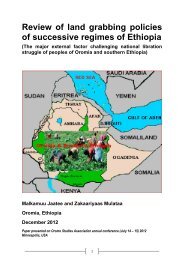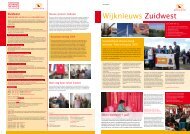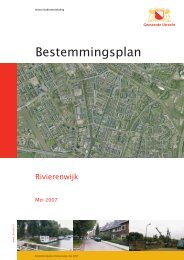freakonomics
freakonomics
freakonomics
You also want an ePaper? Increase the reach of your titles
YUMPU automatically turns print PDFs into web optimized ePapers that Google loves.
subtle ways to inflate students’ scores. A teacher can simply give students extra time to<br />
complete the test. If she obtains a copy of the exam early—that is, illegitimately—she can<br />
prepare them for specific questions. More broadly, she can “teach to the test,” basing her<br />
lesson plans on questions from past years’ exams, which isn’t considered cheating but<br />
certainly violates the spirit of the test. Since these tests all have multiple-choice answers,<br />
with no penalty for wrong guesses, a teacher might instruct her students to randomly fill<br />
in every blank as the clock is winding down, perhaps inserting a long string of Bs or an<br />
alternating pattern of Bs and Cs. She might even fill in the blanks for them after they’ve<br />
left the room.<br />
But if a teacher really wanted to cheat—and make it worth her while—she might collect<br />
her students’ answer sheets and, in the hour or so before turning them in to be read by an<br />
electronic scanner, erase the wrong answers and fill in correct ones. (And you always<br />
thought that no. 2 pencil was for the children to change their answers.) If this kind of<br />
teacher cheating is truly going on, how might it be detected?<br />
To catch a cheater, it helps to think like one. If you were willing to erase your students’<br />
wrong answers and fill in correct ones, you probably wouldn’t want to change too many<br />
wrong answers. That would clearly be a tip-off. You probably wouldn’t even want to<br />
change answers on every student’s test—another tip-off. Nor, in all likelihood, would you<br />
have enough time, because the answer sheets are turned in soon after the test is over. So<br />
what you might do is select a string of eight or ten consecutive questions and fill in the<br />
correct answers for, say, one-half or two-thirds of your students. You could easily<br />
memorize a short pattern of correct answers, and it would be a lot faster to erase and<br />
change that pattern than to go through each student’s answer sheet individually. You<br />
might even think to focus your activity toward the end of the test, where the questions<br />
tend to be harder than the earlier questions. In that way, you’d be most likely to substitute<br />
correct answers for wrong ones.<br />
If economics is a science primarily concerned with incentives, it is also—fortunately—a<br />
science with statistical tools to measure how people respond to those incentives. All you<br />
need are some data.<br />
In this case, the Chicago Public School system obliged. It made available a database of<br />
the test answers for every CPS student from third grade through seventh grade from 1993<br />
to 2000. This amounts to roughly 30,000 students per grade per year, more than 700,000<br />
sets of test answers, and nearly 100 million individual answers. The data, organized by<br />
classroom, included each student’s question-by-question answer strings for reading and<br />
math tests. (The actual paper answer sheets were not included; they were habitually<br />
shredded soon after a test.) The data also included some information about each teacher<br />
and demographic information for every student, as well as his or her past and future test<br />
scores—which would prove a key element in detecting the teacher cheating.<br />
Now it was time to construct an algorithm that could tease some conclusions from this<br />
mass of data. What might a cheating teacher’s classroom look like?









